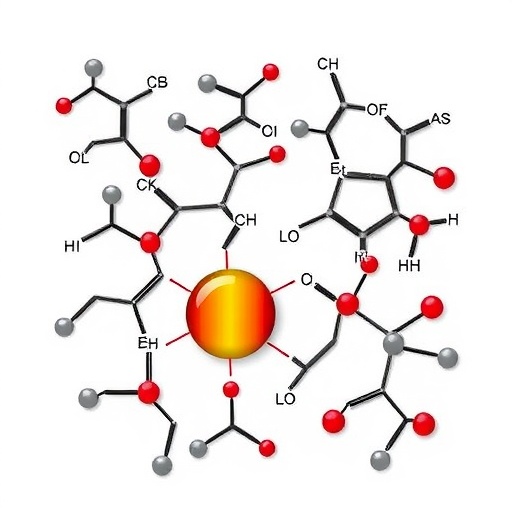In the realm of geriatric health, resistance training has long been regarded as a powerful tool in combating the effects of sarcopenia—a condition characterized by the progressive loss of muscle mass and strength associated with aging. A recent study, published in the journal BMC Geriatrics, has illuminated the intricacies surrounding the dose-response effects of resistance training in sarcopenic older adults, paving the way for more tailored and effective exercise strategies for this vulnerable population. This systematic review and meta-analysis, spearheaded by renowned researchers including Ran, Yang, and Li, offers vital insights into how varying intensities and frequencies of resistance training can uniquely influence the health outcomes of elderly individuals grappling with muscle degeneration.
The implications of sarcopenia extend far beyond mere aesthetics; they encompass significant declines in functional performance, increased disability, and a reduced quality of life for older adults. This condition is increasingly recognized as a crucial public health challenge, given the aging global population and its associated health burdens. It is essential to understand that the muscle loss experienced during aging does not occur in isolation; rather, it is entwined with various factors including hormonal changes, reduced physical activity, and nutritional deficiencies. Thus, developing effective resistance training protocols could not only mitigate muscle loss but also cultivate overall vitality within this demographic.
In the systematic review, the researchers meticulously analyzed data from numerous trials, benchmarked against established resistance training guidelines. They focused on practical variables such as frequency, intensity, volume, and duration of exercise regimens, thereby enabling a comprehensive assessment of how these parameters can be optimized to yield the most therapeutic benefits for sarcopenic individuals. The findings reveal that even modest levels of resistance training can significantly enhance muscle mass and strength, offering a beacon of hope to those concerned about the debilitating effects of aging.
One of the standout revelations of the study is the concept of dose responsiveness. The researchers indicated that there is indeed a correlation between the amount of resistance training and its effectiveness; however, the relationship is not linear. This means that while increasing the intensity or frequency of training can lead to greater improvements, there is a threshold beyond which additional training may not provide further benefits and could potentially increase the risk of injury. Consequently, devising an individualized program, tailored to each patient’s baseline fitness level and health status, becomes paramount.
Moreover, the study emphasizes the importance of not just strength training but also the integration of balance and flexibility exercises alongside resistance training. Such a multifaceted approach may effectively diminish the risk of falls—a leading cause of morbidity and mortality among older adults. Combining these modalities could provide a more holistic improvement in function and mobility, empowering older adults to perform daily activities with greater confidence and independence.
As the research delved deeper into various resistance training modalities, findings suggested that both free weights and machine-based exercises can yield substantial gains, provided they are executed with proper technique and intensity. This revelation serves to underscore the necessity for structured training programs led by qualified professionals who can ensure safety while promoting optimal performance outcomes. Such oversight helps prevent the common injuries associated with improper lifting techniques, which are especially critical given the fragile state of this population.
From a broader perspective, the societal implications of enhancing physical fitness among older adults are profound. Improved muscle strength and function can lead to reduced healthcare costs related to fall-related injuries, hospitalizations, and long-term care. Additionally, increased independence and enhanced quality of life not only benefit the individuals themselves but also alleviate the emotional and financial burdens on their families and caregivers. The cultivation of an active aging population can ultimately contribute to more vibrant communities and healthier societies.
While the advantages of resistance training for older adults are well documented, this research pushes the boundaries of understanding forward, offering a nuanced, evidence-based perspective that can inform future fitness guidelines. It highlights the necessity for ongoing research to refine our understanding of how to best implement these findings in real-world settings, ensuring that older adults have access to beneficial exercise programs that are safe, effective, and enjoyable.
As the research community continues to build on these findings, it is crucial for healthcare professionals to engage with their geriatric patients about the importance of maintaining an active lifestyle. Integrating discussion of resistance training into routine healthcare conversations can empower older adults to take charge of their physical health, fostering a proactive approach to wellness that may enhance both longevity and quality of life.
In summary, the systematic review and meta-analysis by Ran et al. elucidates the significance of resistance training as a modifiable intervention that can substantially improve the health outcomes of sarcopenic older adults. By understanding the dose-response relationships and tailoring exercise programs accordingly, we can move toward a future where aging is not synonymous with disability but can be accompanied by strength, vitality, and enhanced well-being.
As we celebrate these important findings, it becomes evident that collaboration between researchers, healthcare providers, and community fitness organizations will be essential in driving the message of physical fitness home, ultimately maximizing the potential for healthy aging across the globe. With a collective commitment to promoting resistance training, we can help ensure that older adults enjoy not just longer lives, but also lives filled with strength, mobility, and joy.
In conclusion, the quest to understand and address sarcopenia represents not only a scientific challenge but also a moral imperative to support the well-being of our aging populations. By investing in research, education, and practical interventions, we can contribute to a paradigm shift in how society perceives aging and health, embracing a more inclusive and proactive stance that champions the strength and capabilities of older adults.
Subject of Research: Dose-response effects of resistance training in sarcopenic older adults
Article Title: Dose-response effects of resistance training in sarcopenic older adults: systematic review and meta-analysis
Article References:
Ran, J., Yang, J., Li, N. et al. Dose-response effects of resistance training in sarcopenic older adults: systematic review and meta-analysis.
BMC Geriatr 25, 849 (2025). https://doi.org/10.1186/s12877-025-06559-4
Image Credits: AI Generated
DOI: https://doi.org/10.1186/s12877-025-06559-4
Keywords: Resistance training, sarcopenia, older adults, dose-response, muscle health, geriatric fitness, systematic review, meta-analysis.
Tags: combating muscle degeneration in elderlydose-response effects of resistance traininggeriatric health and fitnessimpact of exercise on elderly healthimproving quality of life in seniorsmuscle mass loss in older adultsnutritional deficiencies and muscle healthpublic health challenges of sarcopeniaresistance training for seniorssarcopenia and agingstrength training benefits for older adultstailored exercise strategies for seniors





